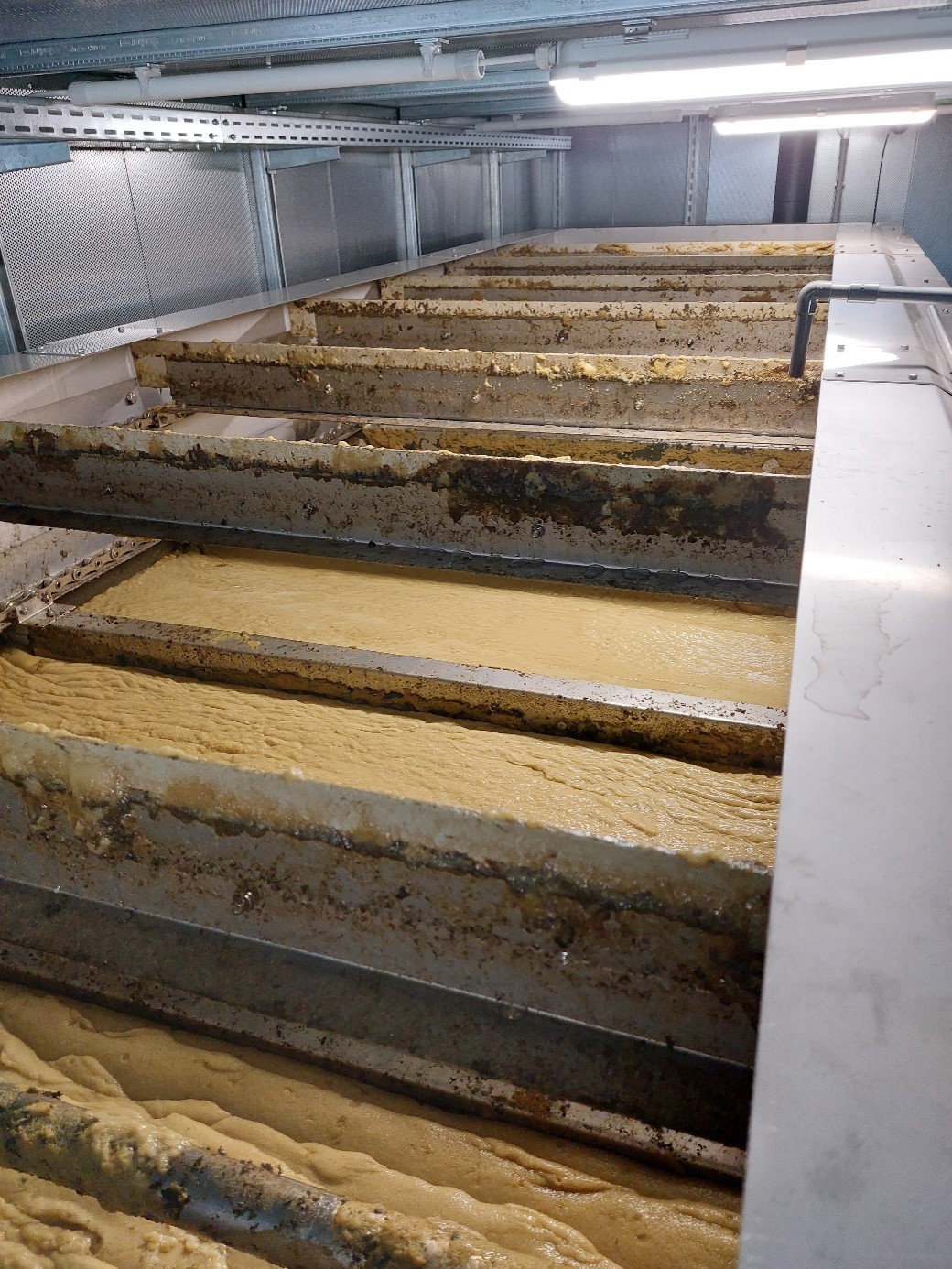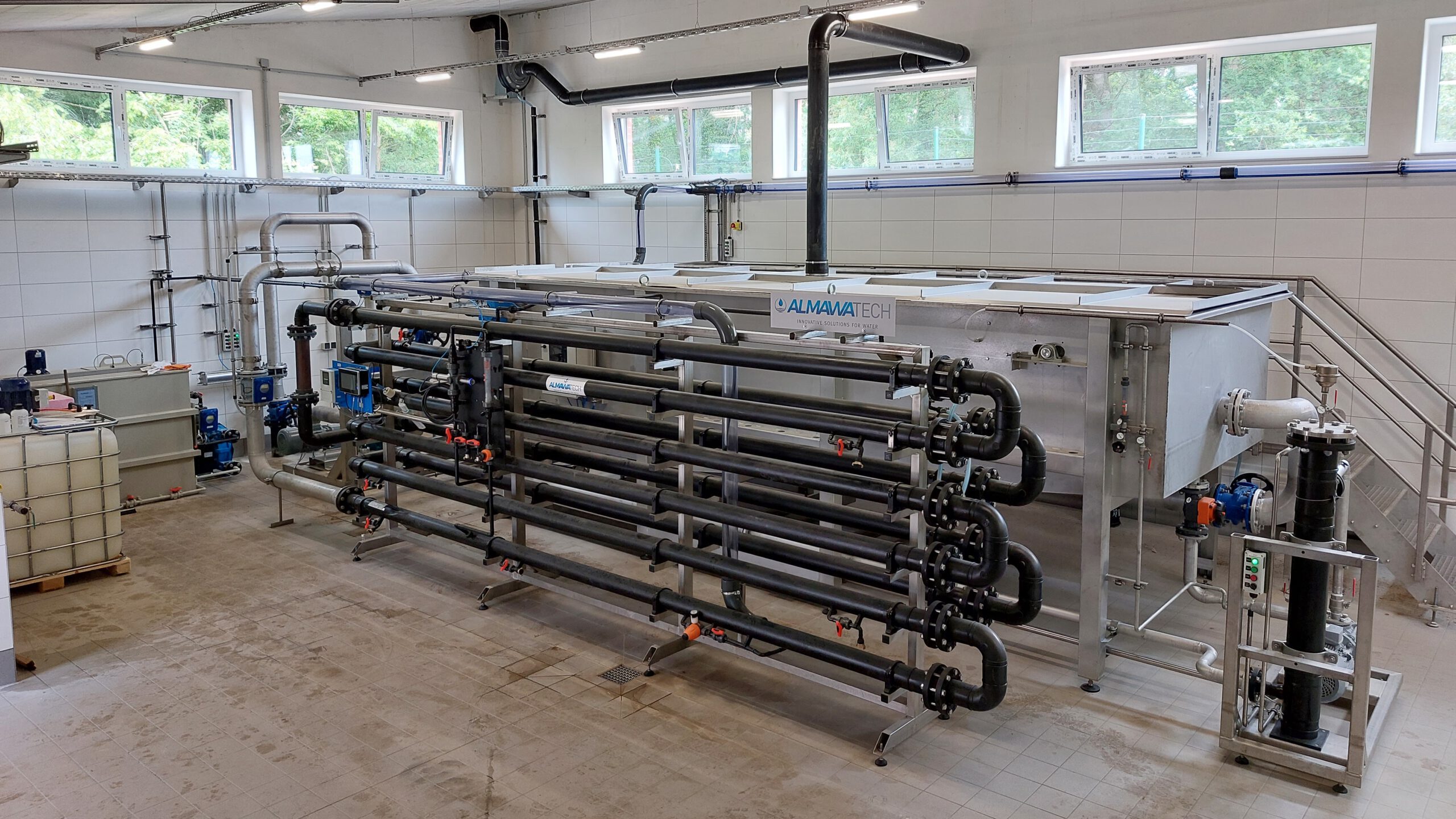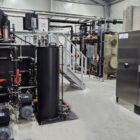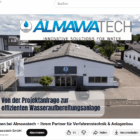Flotate sludge is a by-product/waste product that is produced as part of a flotation plant used for wastewater treatment. This physical separation method is used to remove undissolved particles and impurities from wastewater. Flotate sludge typically consists of fats, oils, suspended solids and other organic or inorganic substances that are aggregated into flocs by the chemical treatment of the wastewater in the flotation cell and then brought to the surface.
Table of contents
How flotation works and the formation of flotate sludge
In industrial water treatment, especially for wastewater with a high organic load, as is often the case in the food industry, flotation is an established method for pretreating wastewater. During the process, the wastewater is precipitants, neutralizing agents and flocculants are added to the wastewater are added to the wastewater to convert the dissolved pollutants into undissolved flocs. These flocs bind pollutants such as fats, oils, heavy metals or organic compounds (e.g. COD) and thus form the flotate sludge.
After this chemical pre-treatment, air is introduced into the flotation cell under high pressure, creating micro-bubbles. These micro-bubbles adhere to the flocs and cause them to rise to the surface of the water, where they form a flotation sludge carpet. This sludge is then separated from the surface using a sludge scraper.

Photo: Flotate sludge in one of our flotation plants
Use in the food industry
Flotation systems are particularly common in the food industry, where wastewater often contains a high concentration of fats, oils and organic compounds. Pre-treatment of such wastewater in flotation plants is not only an effective way of reducing the pollutant load, but also an economical method, as the resulting flotate sludge has a high energy content.
In the food industry - especially in dairies, abattoirs or beverage producers - high-energy flotate sludge is increasingly being used as a substrate in anaerobic biogas plants. This waste provides a valuable source for biogas production as it contains organic substances that can be converted into biogas during anaerobic decomposition. This leads to a double added value: on the one hand, the wastewater is efficiently cleaned and, on the other, the flotate sludge is used to generate energy.
Advantages of flotation and flotate sludge recycling
Effective pollutant removal: Flotation processes can efficiently separate organic and inorganic substances that are dissolved in wastewater or present in suspended solids, thus significantly reducing COD (chemical oxygen demand) and other parameters such as fats and oils.
Energy generation through biogas: The sludge produced in the flotation process is energy-rich and can be further utilized in anaerobic biogas plants. These processes are not only environmentally friendly, but also offer the possibility of generating renewable energy in the form of biogas.
Sustainability and cost-effectiveness: The combination of flotation and biogas technologies makes efficient use of resources. The treatment of wastewater and energy recovery from the flotate sludge help to reduce operating costs and improve the environmental balance.

Photo: ALMA NeoDAF HDED flotation for the treatment of dairy wastewater
Conclusion
Flotate sludge is a by-product/waste product in industrial wastewater treatment, with a high load of organic substances and pollutants. Especially in the food industry, the pre-treatment of wastewater in flotation plants is a profitable process that can be used both for wastewater pre-treatment and for biogas production biogas production. By using the flotate sludge in anaerobic biogas plants, a sustainable and resource-saving process is made possible that relieves the environment and reduces the ecological footprint of industrial companies.
Advantages of ALMAWATECH dissolved air flotation
The flotation systems from ALMAWATECH offer several technical advantages that guarantee high efficiency and operational reliability:
Non-clogging expansion valves: The air-saturated water flow is mixed evenly through pneumatic valves that operate without clogging.
Patented, energy-efficient air saturation system: the Venturi effect efficiently mixes the air into the water, which reduces energy consumption.
Bubble Booster System: This patented system ensures energy-efficient micro-bubble formation and guarantees the optimum bubble size to maximize floc formation and separation of pollutants.
Load-proportional dosing of operating agents: The inline dosing in our plants is controlled by a COD online measurement system that precisely adjusts the precipitants and flocculants to the wastewater load. This leads to considerable savings in operating costs.
Aerophilic floc formation: The return flow of the air-saturated water stream into the flocculation reactor promotes the formation of aerophilic flocs, which have better buoyancy and reach the surface more quickly.
All of our dissolved air flotation systems are equipped with an integrated process control system based on the ALMA Vision software in the Siemens TIA portal, as well as specially developed ALMA AQUA equipment for precipitants, neutralizing agents and flocculants. The optimum equipment is selected following comprehensive laboratory testing in order to best meet the specific requirements of your wastewater.








